
We're using the @n8n_io cloud for our internal automation tasks since the beta started. It's awesome! Also, support is super fast and always helpful. 🤗




Unlock GraphQL’s full potential with n8n, connecting it to similar Data & Storage apps and over 1000 other services. Automate data management by syncing, validating, and transforming data across platforms. Create adaptable and scalable workflows between GraphQL and your stack. All within a building experience you will love.
 Google Sheets
and GraphQL integration
Google Sheets
and GraphQL integration MySQL
and GraphQL integration
MySQL
and GraphQL integration Slack
and GraphQL integration
Slack
and GraphQL integration Postgres
and GraphQL integration
Postgres
and GraphQL integration Airtable
and GraphQL integration
Airtable
and GraphQL integration Google Drive
and GraphQL integration
Google Drive
and GraphQL integration MongoDB
and GraphQL integration
MongoDB
and GraphQL integration SendGrid
and GraphQL integration
SendGrid
and GraphQL integration AWS S3
and GraphQL integration
AWS S3
and GraphQL integration HTTP Request
and GraphQL integration
HTTP Request
and GraphQL integration Webhook
and GraphQL integration
Webhook
and GraphQL integration Telegram
and GraphQL integration
Telegram
and GraphQL integration Discord
and GraphQL integration
Discord
and GraphQL integration Notion
and GraphQL integration
Notion
and GraphQL integration Gmail
and GraphQL integration
Gmail
and GraphQL integration GitHub
and GraphQL integration
GitHub
and GraphQL integration Google Calendar
and GraphQL integration
Google Calendar
and GraphQL integration Microsoft SQL
and GraphQL integration
Microsoft SQL
and GraphQL integration OpenWeatherMap
and GraphQL integration
OpenWeatherMap
and GraphQL integration HubSpot
and GraphQL integration
HubSpot
and GraphQL integration X (Formerly Twitter)
and GraphQL integration
X (Formerly Twitter)
and GraphQL integration Mautic
and GraphQL integration
Mautic
and GraphQL integration Redis
and GraphQL integration
Redis
and GraphQL integration Pushover
and GraphQL integration
Pushover
and GraphQL integration Jira Software
and GraphQL integration
Jira Software
and GraphQL integration ClickUp
and GraphQL integration
ClickUp
and GraphQL integration Trello
and GraphQL integration
Trello
and GraphQL integration Twilio
and GraphQL integration
Twilio
and GraphQL integration Todoist
and GraphQL integration
Todoist
and GraphQL integration Pipedrive
and GraphQL integration
Pipedrive
and GraphQL integration Nextcloud
and GraphQL integration
Nextcloud
and GraphQL integration Microsoft Outlook
and GraphQL integration
Microsoft Outlook
and GraphQL integration Mattermost
and GraphQL integration
Mattermost
and GraphQL integration Facebook Graph API
and GraphQL integration
Facebook Graph API
and GraphQL integration WooCommerce
and GraphQL integration
WooCommerce
and GraphQL integration NocoDB
and GraphQL integration
NocoDB
and GraphQL integration Google Docs
and GraphQL integration
Google Docs
and GraphQL integration S3
and GraphQL integration
S3
and GraphQL integration Spotify
and GraphQL integration
Spotify
and GraphQL integration ActiveCampaign
and GraphQL integration
ActiveCampaign
and GraphQL integration MQTT
and GraphQL integration
MQTT
and GraphQL integration Home Assistant
and GraphQL integration
Home Assistant
and GraphQL integration WhatsApp Business Cloud
and GraphQL integration
WhatsApp Business Cloud
and GraphQL integration Google Contacts
and GraphQL integration
Google Contacts
and GraphQL integration YouTube
and GraphQL integration
YouTube
and GraphQL integration RabbitMQ
and GraphQL integration
RabbitMQ
and GraphQL integration Supabase
and GraphQL integration
Supabase
and GraphQL integration RocketChat
and GraphQL integration
RocketChat
and GraphQL integration TheHive
and GraphQL integration
TheHive
and GraphQL integration Salesforce
and GraphQL integration
Salesforce
and GraphQL integration Microsoft Teams
and GraphQL integration
Microsoft Teams
and GraphQL integration Mailgun
and GraphQL integration
Mailgun
and GraphQL integration Matrix
and GraphQL integration
Matrix
and GraphQL integration Dropbox
and GraphQL integration
Dropbox
and GraphQL integration Google Cloud Firestore
and GraphQL integration
Google Cloud Firestore
and GraphQL integration Reddit
and GraphQL integration
Reddit
and GraphQL integration Mailchimp
and GraphQL integration
Mailchimp
and GraphQL integration Asana
and GraphQL integration
Asana
and GraphQL integration Wordpress
and GraphQL integration
Wordpress
and GraphQL integration Gotify
and GraphQL integration
Gotify
and GraphQL integration Mailjet
and GraphQL integration
Mailjet
and GraphQL integration Elasticsearch
and GraphQL integration
Elasticsearch
and GraphQL integration Google BigQuery
and GraphQL integration
Google BigQuery
and GraphQL integration Stripe
and GraphQL integration
Stripe
and GraphQL integration Microsoft OneDrive
and GraphQL integration
Microsoft OneDrive
and GraphQL integration Microsoft Excel 365
and GraphQL integration
Microsoft Excel 365
and GraphQL integration Monday.com
and GraphQL integration
Monday.com
and GraphQL integration CoinGecko
and GraphQL integration
CoinGecko
and GraphQL integration Zendesk
and GraphQL integration
Zendesk
and GraphQL integration APITemplate.io
and GraphQL integration
APITemplate.io
and GraphQL integration Line
and GraphQL integration
Line
and GraphQL integration AWS Lambda
and GraphQL integration
AWS Lambda
and GraphQL integration Shopify
and GraphQL integration
Shopify
and GraphQL integration Kafka
and GraphQL integration
Kafka
and GraphQL integration NASA
and GraphQL integration
NASA
and GraphQL integration GitLab
and GraphQL integration
GitLab
and GraphQL integration Brevo
and GraphQL integration
Brevo
and GraphQL integration Customer Datastore (n8n training)
and GraphQL integration
Customer Datastore (n8n training)
and GraphQL integration Microsoft To Do
and GraphQL integration
Microsoft To Do
and GraphQL integration Pushbullet
and GraphQL integration
Pushbullet
and GraphQL integration LinkedIn
and GraphQL integration
LinkedIn
and GraphQL integration AWS SES
and GraphQL integration
AWS SES
and GraphQL integration Webflow
and GraphQL integration
Webflow
and GraphQL integration Odoo
and GraphQL integration
Odoo
and GraphQL integration SeaTable
and GraphQL integration
SeaTable
and GraphQL integration Phantombuster
and GraphQL integration
Phantombuster
and GraphQL integration Bubble
and GraphQL integration
Bubble
and GraphQL integration Google Tasks
and GraphQL integration
Google Tasks
and GraphQL integration AWS DynamoDB
and GraphQL integration
AWS DynamoDB
and GraphQL integration DeepL
and GraphQL integration
DeepL
and GraphQL integration Google Analytics
and GraphQL integration
Google Analytics
and GraphQL integration Coda
and GraphQL integration
Coda
and GraphQL integration Zoho CRM
and GraphQL integration
Zoho CRM
and GraphQL integration Google Translate
and GraphQL integration
Google Translate
and GraphQL integration Google Chat
and GraphQL integration
Google Chat
and GraphQL integration Clockify
and GraphQL integration
Clockify
and GraphQL integration Raindrop
and GraphQL integration
Raindrop
and GraphQL integration Zoom
and GraphQL integration
Zoom
and GraphQL integration Snowflake
and GraphQL integration
Snowflake
and GraphQL integration Dropcontact
and GraphQL integration
Dropcontact
and GraphQL integration Grist
and GraphQL integration
Grist
and GraphQL integration Cortex
and GraphQL integration
Cortex
and GraphQL integration Lemlist
and GraphQL integration
Lemlist
and GraphQL integration Strapi
and GraphQL integration
Strapi
and GraphQL integration Bitly
and GraphQL integration
Bitly
and GraphQL integration Google Slides
and GraphQL integration
Google Slides
and GraphQL integration ERPNext
and GraphQL integration
ERPNext
and GraphQL integration Google Workspace Admin
and GraphQL integration
Google Workspace Admin
and GraphQL integration Wise
and GraphQL integration
Wise
and GraphQL integration Yourls
and GraphQL integration
Yourls
and GraphQL integration Philips Hue
and GraphQL integration
Philips Hue
and GraphQL integration Xero
and GraphQL integration
Xero
and GraphQL integration AWS SNS
and GraphQL integration
AWS SNS
and GraphQL integration Freshdesk
and GraphQL integration
Freshdesk
and GraphQL integration UptimeRobot
and GraphQL integration
UptimeRobot
and GraphQL integration One Simple API
and GraphQL integration
One Simple API
and GraphQL integration Pushcut
and GraphQL integration
Pushcut
and GraphQL integration Zulip
and GraphQL integration
Zulip
and GraphQL integration Ghost
and GraphQL integration
Ghost
and GraphQL integration QuickBooks Online
and GraphQL integration
QuickBooks Online
and GraphQL integration Wekan
and GraphQL integration
Wekan
and GraphQL integration Customer.io
and GraphQL integration
Customer.io
and GraphQL integration Zammad
and GraphQL integration
Zammad
and GraphQL integration Metabase
and GraphQL integration
Metabase
and GraphQL integration Jenkins
and GraphQL integration
Jenkins
and GraphQL integration urlscan.io
and GraphQL integration
urlscan.io
and GraphQL integration PagerDuty
and GraphQL integration
PagerDuty
and GraphQL integration Customer Messenger (n8n training)
and GraphQL integration
Customer Messenger (n8n training)
and GraphQL integration MailerLite
and GraphQL integration
MailerLite
and GraphQL integration Linear
and GraphQL integration
Linear
and GraphQL integration Hacker News
and GraphQL integration
Hacker News
and GraphQL integration FileMaker
and GraphQL integration
FileMaker
and GraphQL integration seven
and GraphQL integration
seven
and GraphQL integration Sendy
and GraphQL integration
Sendy
and GraphQL integration Harvest
and GraphQL integration
Harvest
and GraphQL integration Taiga
and GraphQL integration
Taiga
and GraphQL integration Mindee
and GraphQL integration
Mindee
and GraphQL integration Mandrill
and GraphQL integration
Mandrill
and GraphQL integration AWS SQS
and GraphQL integration
AWS SQS
and GraphQL integration Google Cloud Realtime Database
and GraphQL integration
Google Cloud Realtime Database
and GraphQL integration Keap
and GraphQL integration
Keap
and GraphQL integration Grafana
and GraphQL integration
Grafana
and GraphQL integration Onfleet
and GraphQL integration
Onfleet
and GraphQL integration Discourse
and GraphQL integration
Discourse
and GraphQL integration Strava
and GraphQL integration
Strava
and GraphQL integration Medium
and GraphQL integration
Medium
and GraphQL integration Bannerbear
and GraphQL integration
Bannerbear
and GraphQL integration ConvertKit
and GraphQL integration
ConvertKit
and GraphQL integration Magento 2
and GraphQL integration
Magento 2
and GraphQL integration HighLevel
and GraphQL integration
HighLevel
and GraphQL integration Box
and GraphQL integration
Box
and GraphQL integration Invoice Ninja
and GraphQL integration
Invoice Ninja
and GraphQL integration Google Cloud Natural Language
and GraphQL integration
Google Cloud Natural Language
and GraphQL integration ServiceNow
and GraphQL integration
ServiceNow
and GraphQL integration AWS Transcribe
and GraphQL integration
AWS Transcribe
and GraphQL integration uProc
and GraphQL integration
uProc
and GraphQL integration HelpScout
and GraphQL integration
HelpScout
and GraphQL integration TimescaleDB
and GraphQL integration
TimescaleDB
and GraphQL integration MessageBird
and GraphQL integration
MessageBird
and GraphQL integration BambooHR
and GraphQL integration
BambooHR
and GraphQL integration Sentry.io
and GraphQL integration
Sentry.io
and GraphQL integration AWS Textract
and GraphQL integration
AWS Textract
and GraphQL integration Segment
and GraphQL integration
Segment
and GraphQL integration Splunk
and GraphQL integration
Splunk
and GraphQL integration QuestDB
and GraphQL integration
QuestDB
and GraphQL integration Intercom
and GraphQL integration
Intercom
and GraphQL integration Google Cloud Storage
and GraphQL integration
Google Cloud Storage
and GraphQL integration Vonage
and GraphQL integration
Vonage
and GraphQL integration PostBin
and GraphQL integration
PostBin
and GraphQL integration Plivo
and GraphQL integration
Plivo
and GraphQL integration Clearbit
and GraphQL integration
Clearbit
and GraphQL integration Rundeck
and GraphQL integration
Rundeck
and GraphQL integration Adalo
and GraphQL integration
Adalo
and GraphQL integration AWS Comprehend
and GraphQL integration
AWS Comprehend
and GraphQL integration Google Perspective
and GraphQL integration
Google Perspective
and GraphQL integration Paddle
and GraphQL integration
Paddle
and GraphQL integration DHL
and GraphQL integration
DHL
and GraphQL integration Freshservice
and GraphQL integration
Freshservice
and GraphQL integration SIGNL4
and GraphQL integration
SIGNL4
and GraphQL integration Quick Base
and GraphQL integration
Quick Base
and GraphQL integration Peekalink
and GraphQL integration
Peekalink
and GraphQL integration Webex by Cisco
and GraphQL integration
Webex by Cisco
and GraphQL integration Google Ads
and GraphQL integration
Google Ads
and GraphQL integration Contentful
and GraphQL integration
Contentful
and GraphQL integration AWS Rekognition
and GraphQL integration
AWS Rekognition
and GraphQL integration Oura
and GraphQL integration
Oura
and GraphQL integration Cockpit
and GraphQL integration
Cockpit
and GraphQL integration HaloPSA
and GraphQL integration
HaloPSA
and GraphQL integration Monica CRM
and GraphQL integration
Monica CRM
and GraphQL integration Marketstack
and GraphQL integration
Marketstack
and GraphQL integration Kitemaker
and GraphQL integration
Kitemaker
and GraphQL integration Autopilot
and GraphQL integration
Autopilot
and GraphQL integration MISP
and GraphQL integration
MISP
and GraphQL integration Freshworks CRM
and GraphQL integration
Freshworks CRM
and GraphQL integration Agile CRM
and GraphQL integration
Agile CRM
and GraphQL integration Beeminder
and GraphQL integration
Beeminder
and GraphQL integration Orbit
and GraphQL integration
Orbit
and GraphQL integration E-goi
and GraphQL integration
E-goi
and GraphQL integration Hunter
and GraphQL integration
Hunter
and GraphQL integration Action Network
and GraphQL integration
Action Network
and GraphQL integration MSG91
and GraphQL integration
MSG91
and GraphQL integration Emelia
and GraphQL integration
Emelia
and GraphQL integration Microsoft Graph Security
and GraphQL integration
Microsoft Graph Security
and GraphQL integration AMQP Sender
and GraphQL integration
AMQP Sender
and GraphQL integration LingvaNex
and GraphQL integration
LingvaNex
and GraphQL integration Automizy
and GraphQL integration
Automizy
and GraphQL integration CrateDB
and GraphQL integration
CrateDB
and GraphQL integration PostHog
and GraphQL integration
PostHog
and GraphQL integration PayPal
and GraphQL integration
PayPal
and GraphQL integration Chargebee
and GraphQL integration
Chargebee
and GraphQL integration Bitwarden
and GraphQL integration
Bitwarden
and GraphQL integration Affinity
and GraphQL integration
Affinity
and GraphQL integration KoBoToolbox
and GraphQL integration
KoBoToolbox
and GraphQL integration ProfitWell
and GraphQL integration
ProfitWell
and GraphQL integration Demio
and GraphQL integration
Demio
and GraphQL integration Microsoft Dynamics CRM
and GraphQL integration
Microsoft Dynamics CRM
and GraphQL integration Twist
and GraphQL integration
Twist
and GraphQL integration Google Books
and GraphQL integration
Google Books
and GraphQL integration Venafi TLS Protect Cloud
and GraphQL integration
Venafi TLS Protect Cloud
and GraphQL integration SyncroMSP
and GraphQL integration
SyncroMSP
and GraphQL integration AWS Certificate Manager
and GraphQL integration
AWS Certificate Manager
and GraphQL integration SecurityScorecard
and GraphQL integration
SecurityScorecard
and GraphQL integration Disqus
and GraphQL integration
Disqus
and GraphQL integration Salesmate
and GraphQL integration
Salesmate
and GraphQL integration GoToWebinar
and GraphQL integration
GoToWebinar
and GraphQL integration Iterable
and GraphQL integration
Iterable
and GraphQL integration Mocean
and GraphQL integration
Mocean
and GraphQL integration CircleCI
and GraphQL integration
CircleCI
and GraphQL integration Stackby
and GraphQL integration
Stackby
and GraphQL integration Tapfiliate
and GraphQL integration
Tapfiliate
and GraphQL integration Humantic AI
and GraphQL integration
Humantic AI
and GraphQL integration Elastic Security
and GraphQL integration
Elastic Security
and GraphQL integration Venafi TLS Protect Datacenter
and GraphQL integration
Venafi TLS Protect Datacenter
and GraphQL integration GetResponse
and GraphQL integration
GetResponse
and GraphQL integration Netlify
and GraphQL integration
Netlify
and GraphQL integration Cloudflare
and GraphQL integration
Cloudflare
and GraphQL integration Spontit
and GraphQL integration
Spontit
and GraphQL integration AWS ELB
and GraphQL integration
AWS ELB
and GraphQL integration Netscaler ADC
and GraphQL integration
Netscaler ADC
and GraphQL integration Unleashed Software
and GraphQL integration
Unleashed Software
and GraphQL integration OpenThesaurus
and GraphQL integration
OpenThesaurus
and GraphQL integration Copper
and GraphQL integration
Copper
and GraphQL integration Flow
and GraphQL integration
Flow
and GraphQL integration Storyblok
and GraphQL integration
Storyblok
and GraphQL integration Mailcheck
and GraphQL integration
Mailcheck
and GraphQL integration Vero
and GraphQL integration
Vero
and GraphQL integration Brandfetch
and GraphQL integration
Brandfetch
and GraphQL integration TravisCI
and GraphQL integration
TravisCI
and GraphQL integration Twake
and GraphQL integration
Twake
and GraphQL integration Uplead
and GraphQL integration
Uplead
and GraphQL integration Drift
and GraphQL integration
Drift
and GraphQL integration Embeddings Google Gemini
and GraphQL integration
Embeddings Google Gemini
and GraphQL integration Google Business Profile
and GraphQL integration
Google Business Profile
and GraphQL integration HTTP Request Tool
and GraphQL integration
HTTP Request Tool
and GraphQL integration Microsoft Entra ID
and GraphQL integration
Microsoft Entra ID
and GraphQL integration TheHive 5
and GraphQL integration
TheHive 5
and GraphQL integration DeepSeek Chat Model
and GraphQL integration
DeepSeek Chat Model
and GraphQL integration crowd.dev
and GraphQL integration
crowd.dev
and GraphQL integration JWT
and GraphQL integration
JWT
and GraphQL integration Postgres PGVector Store
and GraphQL integration
Postgres PGVector Store
and GraphQL integration Groq Chat Model
and GraphQL integration
Groq Chat Model
and GraphQL integration QuickChart
and GraphQL integration
QuickChart
and GraphQL integration LoneScale
and GraphQL integration
LoneScale
and GraphQL integration Google Gemini Chat Model
and GraphQL integration
Google Gemini Chat Model
and GraphQL integration Ldap
and GraphQL integration
Ldap
and GraphQL integration OpenRouter Chat Model
and GraphQL integration
OpenRouter Chat Model
and GraphQL integration Postgres Chat Memory
and GraphQL integration
Postgres Chat Memory
and GraphQL integration OpenAI
and GraphQL integration
OpenAI
and GraphQL integration Google Vertex Chat Model
and GraphQL integration
Google Vertex Chat Model
and GraphQL integration Gong
and GraphQL integration
Gong
and GraphQL integration Npm
and GraphQL integration
Npm
and GraphQL integration Okta
and GraphQL integration
Okta
and GraphQL integration ZScaler ZIA
and GraphQL integration
ZScaler ZIA
and GraphQL integration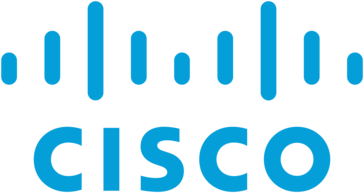 Cisco Secure Endpoint
and GraphQL integration
Cisco Secure Endpoint
and GraphQL integration Carbon Black
and GraphQL integration
Carbon Black
and GraphQL integration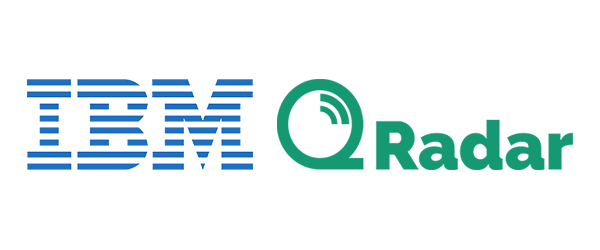 QRadar
and GraphQL integration
QRadar
and GraphQL integration Cisco Umbrella
and GraphQL integration
Cisco Umbrella
and GraphQL integration Kibana
and GraphQL integration
Kibana
and GraphQL integration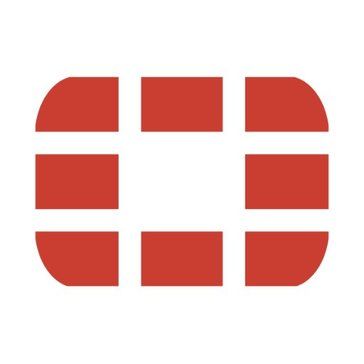 Fortinet FortiGate
and GraphQL integration
Fortinet FortiGate
and GraphQL integration Imperva WAF
and GraphQL integration
Imperva WAF
and GraphQL integration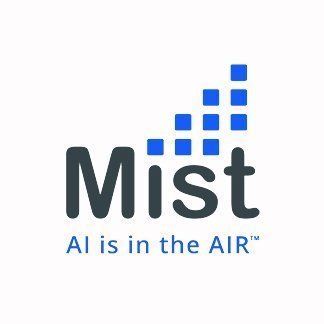 MIST
and GraphQL integration
MIST
and GraphQL integration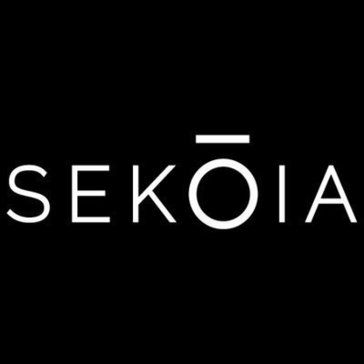 Sekoia
and GraphQL integration
Sekoia
and GraphQL integration Totango
and GraphQL integration
Totango
and GraphQL integration SMS Magic
and GraphQL integration
SMS Magic
and GraphQL integration Formstack Documents
and GraphQL integration
Formstack Documents
and GraphQL integration Hybrid Analysis
and GraphQL integration
Hybrid Analysis
and GraphQL integration IdealSpot
and GraphQL integration
IdealSpot
and GraphQL integration OpenCTI
and GraphQL integration
OpenCTI
and GraphQL integration Myphoner
and GraphQL integration
Myphoner
and GraphQL integration Trellix ePO
and GraphQL integration
Trellix ePO
and GraphQL integration Laposta
and GraphQL integration
Laposta
and GraphQL integration F5 Big-IP
and GraphQL integration
F5 Big-IP
and GraphQL integration Auth0 Management API
and GraphQL integration
Auth0 Management API
and GraphQL integration Mem
and GraphQL integration
Mem
and GraphQL integration Gumroad
and GraphQL integration
Gumroad
and GraphQL integration Planyo Online Booking
and GraphQL integration
Planyo Online Booking
and GraphQL integration Sifter
and GraphQL integration
Sifter
and GraphQL integration ChartMogul
and GraphQL integration
ChartMogul
and GraphQL integration Radar
and GraphQL integration
Radar
and GraphQL integration Snipcart
and GraphQL integration
Snipcart
and GraphQL integration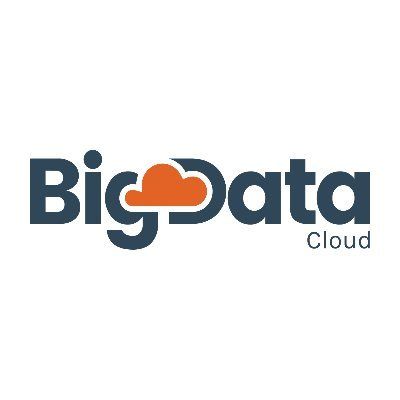 Big Data Cloud
and GraphQL integration
Big Data Cloud
and GraphQL integration Foursquare
and GraphQL integration
Foursquare
and GraphQL integration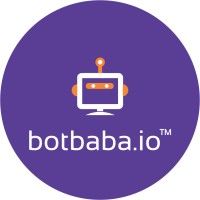 Botbaba
and GraphQL integration
Botbaba
and GraphQL integration Docparser
and GraphQL integration
Docparser
and GraphQL integration Blockchain Exchange
and GraphQL integration
Blockchain Exchange
and GraphQL integration Caspio
and GraphQL integration
Caspio
and GraphQL integration Reply.io
and GraphQL integration
Reply.io
and GraphQL integration Product Hunt
and GraphQL integration
Product Hunt
and GraphQL integration Reply
and GraphQL integration
Reply
and GraphQL integration Marketplacer
and GraphQL integration
Marketplacer
and GraphQL integration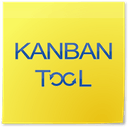 Kanban Tool
and GraphQL integration
Kanban Tool
and GraphQL integration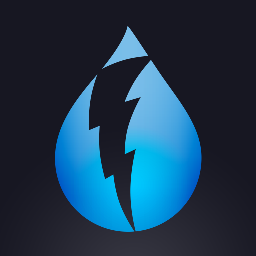 DarkSky API
and GraphQL integration
DarkSky API
and GraphQL integration Ritekit
and GraphQL integration
Ritekit
and GraphQL integration Missive
and GraphQL integration
Missive
and GraphQL integration GoDaddy
and GraphQL integration
GoDaddy
and GraphQL integration Mailmodo
and GraphQL integration
Mailmodo
and GraphQL integration ecwid
and GraphQL integration
ecwid
and GraphQL integration iAuditor by SafetyCulture
and GraphQL integration
iAuditor by SafetyCulture
and GraphQL integration Float
and GraphQL integration
Float
and GraphQL integration Ably
and GraphQL integration
Ably
and GraphQL integration SuiteDash
and GraphQL integration
SuiteDash
and GraphQL integration Mixpanel
and GraphQL integration
Mixpanel
and GraphQL integration Confluence
and GraphQL integration
Confluence
and GraphQL integration Handwrytten
and GraphQL integration
Handwrytten
and GraphQL integration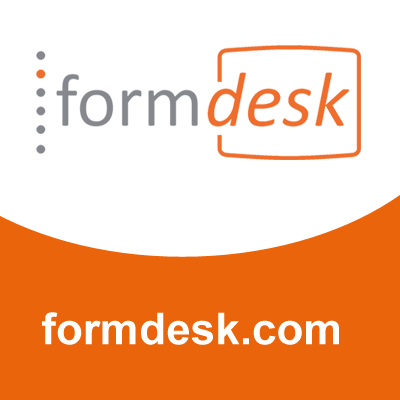 Formdesk
and GraphQL integration
Formdesk
and GraphQL integration Workast
and GraphQL integration
Workast
and GraphQL integration Canvas
and GraphQL integration
Canvas
and GraphQL integration Nozbe Teams
and GraphQL integration
Nozbe Teams
and GraphQL integration Klaviyo
and GraphQL integration
Klaviyo
and GraphQL integration Landbot
and GraphQL integration
Landbot
and GraphQL integration ApiFlash
and GraphQL integration
ApiFlash
and GraphQL integration Nusii Proposals
and GraphQL integration
Nusii Proposals
and GraphQL integration Papyrs
and GraphQL integration
Papyrs
and GraphQL integration Cloud Convert
and GraphQL integration
Cloud Convert
and GraphQL integration Daffy
and GraphQL integration
Daffy
and GraphQL integration Verifalia
and GraphQL integration
Verifalia
and GraphQL integration Spondyr
and GraphQL integration
Spondyr
and GraphQL integration Survicate
and GraphQL integration
Survicate
and GraphQL integration Tilda
and GraphQL integration
Tilda
and GraphQL integration Unisender
and GraphQL integration
Unisender
and GraphQL integration Pinterest
and GraphQL integration
Pinterest
and GraphQL integration Chatrace
and GraphQL integration
Chatrace
and GraphQL integration Snapdocs
and GraphQL integration
Snapdocs
and GraphQL integration ChargeOver
and GraphQL integration
ChargeOver
and GraphQL integration Mav
and GraphQL integration
Mav
and GraphQL integration Headless Testing
and GraphQL integration
Headless Testing
and GraphQL integration AdRoll
and GraphQL integration
AdRoll
and GraphQL integration Docupilot
and GraphQL integration
Docupilot
and GraphQL integration Alchemy
and GraphQL integration
Alchemy
and GraphQL integration Gender API
and GraphQL integration
Gender API
and GraphQL integration Gitea
and GraphQL integration
Gitea
and GraphQL integration Imgur
and GraphQL integration
Imgur
and GraphQL integration Crisp
and GraphQL integration
Crisp
and GraphQL integration Occasion
and GraphQL integration
Occasion
and GraphQL integration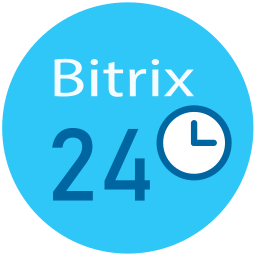 Bitrix24
and GraphQL integration
Bitrix24
and GraphQL integration Zoho Desk
and GraphQL integration
Zoho Desk
and GraphQL integration ShipStation
and GraphQL integration
ShipStation
and GraphQL integration Bandwidth
and GraphQL integration
Bandwidth
and GraphQL integration RAWG Video Games Database
and GraphQL integration
RAWG Video Games Database
and GraphQL integration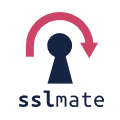 SSLMate — Cert Spotter API
and GraphQL integration
SSLMate — Cert Spotter API
and GraphQL integration Hugging Face
and GraphQL integration
Hugging Face
and GraphQL integration WuBook RateChecker
and GraphQL integration
WuBook RateChecker
and GraphQL integration Linkish
and GraphQL integration
Linkish
and GraphQL integration Simplero
and GraphQL integration
Simplero
and GraphQL integration Accredible
and GraphQL integration
Accredible
and GraphQL integration TRIGGERcmd
and GraphQL integration
TRIGGERcmd
and GraphQL integration TinyURL
and GraphQL integration
TinyURL
and GraphQL integration Let's Enhance
and GraphQL integration
Let's Enhance
and GraphQL integration Project Bubble (ProProfs Project)
and GraphQL integration
Project Bubble (ProProfs Project)
and GraphQL integration Gatekeeper
and GraphQL integration
Gatekeeper
and GraphQL integration Benchmark Email
and GraphQL integration
Benchmark Email
and GraphQL integration ScrapeNinja
and GraphQL integration
ScrapeNinja
and GraphQL integration Dokan
and GraphQL integration
Dokan
and GraphQL integration Fluent Support
and GraphQL integration
Fluent Support
and GraphQL integration Miestro
and GraphQL integration
Miestro
and GraphQL integration Giphy
and GraphQL integration
Giphy
and GraphQL integration SimpleHash
and GraphQL integration
SimpleHash
and GraphQL integration Harry Potter API
and GraphQL integration
Harry Potter API
and GraphQL integration Trengo
and GraphQL integration
Trengo
and GraphQL integration BunnyCDN
and GraphQL integration
BunnyCDN
and GraphQL integration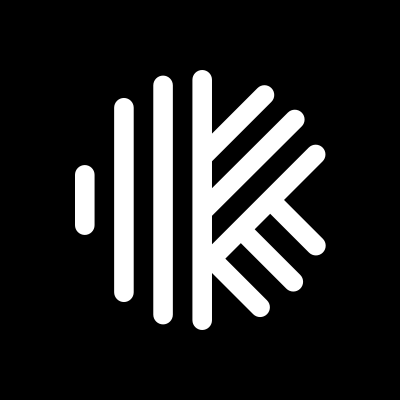 Karbon
and GraphQL integration
Karbon
and GraphQL integration WebinarJam
and GraphQL integration
WebinarJam
and GraphQL integration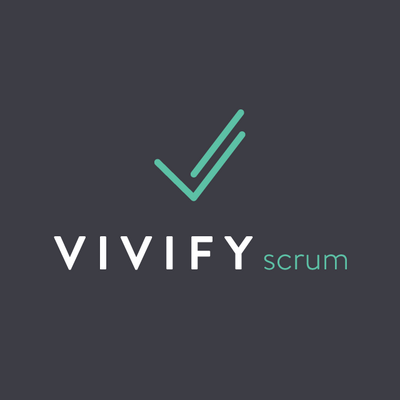 VivifyScrum
and GraphQL integration
VivifyScrum
and GraphQL integration SportsData
and GraphQL integration
SportsData
and GraphQL integration Amilia
and GraphQL integration
Amilia
and GraphQL integration PDFMonkey
and GraphQL integration
PDFMonkey
and GraphQL integration Tisane Labs
and GraphQL integration
Tisane Labs
and GraphQL integration Smaily
and GraphQL integration
Smaily
and GraphQL integration Unbounce
and GraphQL integration
Unbounce
and GraphQL integration WOXO
and GraphQL integration
WOXO
and GraphQL integration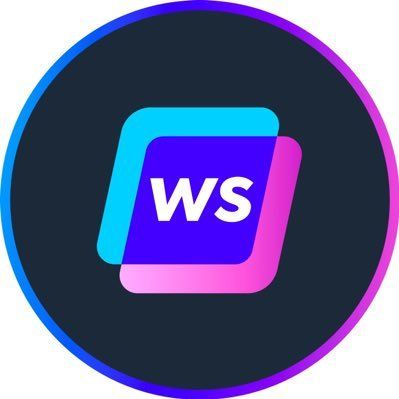 Writesonic
and GraphQL integration
Writesonic
and GraphQL integration Instabot
and GraphQL integration
Instabot
and GraphQL integration Active Trail
and GraphQL integration
Active Trail
and GraphQL integration Nightfall.ai
and GraphQL integration
Nightfall.ai
and GraphQL integration Teamgate
and GraphQL integration
Teamgate
and GraphQL integration Launch27
and GraphQL integration
Launch27
and GraphQL integration Datarobot
and GraphQL integration
Datarobot
and GraphQL integration Botstar
and GraphQL integration
Botstar
and GraphQL integration InfluxDB Cloud
and GraphQL integration
InfluxDB Cloud
and GraphQL integration Linode
and GraphQL integration
Linode
and GraphQL integration UpKeep
and GraphQL integration
UpKeep
and GraphQL integration Thankster
and GraphQL integration
Thankster
and GraphQL integration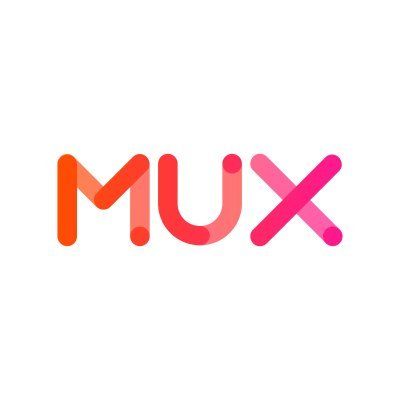 Mux
and GraphQL integration
Mux
and GraphQL integration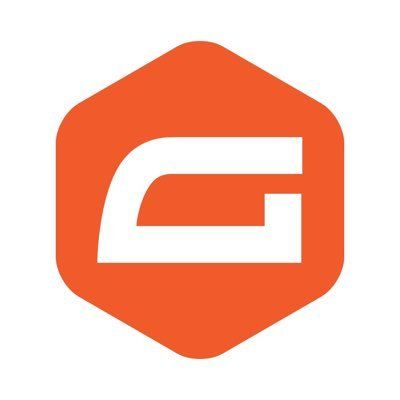 Gravity Forms
and GraphQL integration
Gravity Forms
and GraphQL integration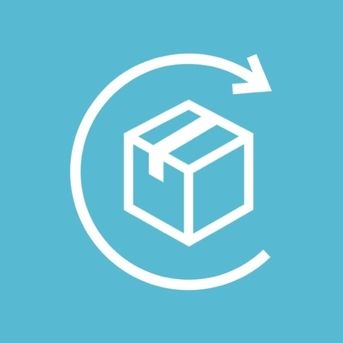 ReCharge
and GraphQL integration
ReCharge
and GraphQL integration Teamdeck
and GraphQL integration
Teamdeck
and GraphQL integration Supportivekoala
and GraphQL integration
Supportivekoala
and GraphQL integration Short.io
and GraphQL integration
Short.io
and GraphQL integration ClickSend SMS
and GraphQL integration
ClickSend SMS
and GraphQL integration Zoho Books
and GraphQL integration
Zoho Books
and GraphQL integration IdealPostcodes
and GraphQL integration
IdealPostcodes
and GraphQL integration Brex
and GraphQL integration
Brex
and GraphQL integration Metatext.AI Inference API
and GraphQL integration
Metatext.AI Inference API
and GraphQL integration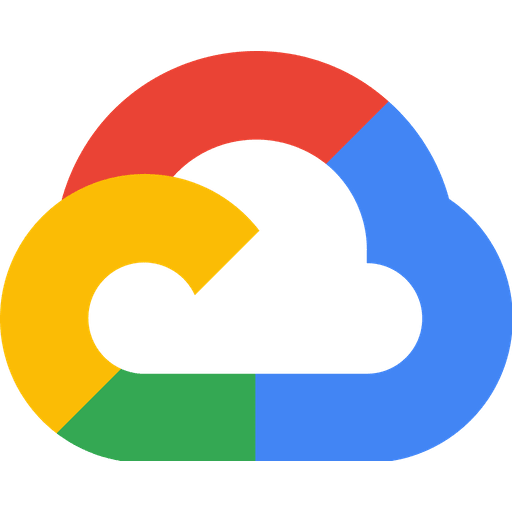 Google Cloud
and GraphQL integration
Google Cloud
and GraphQL integration ConvertAPI
and GraphQL integration
ConvertAPI
and GraphQL integration Klazify
and GraphQL integration
Klazify
and GraphQL integration Mx Toolbox
and GraphQL integration
Mx Toolbox
and GraphQL integration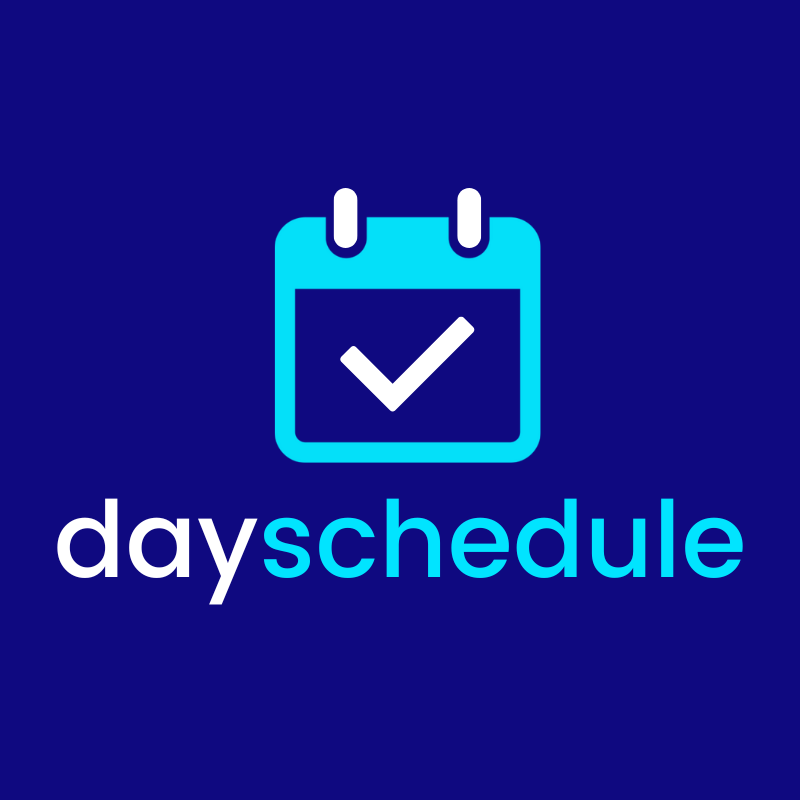 DaySchedule
and GraphQL integration
DaySchedule
and GraphQL integration Dock Certs
and GraphQL integration
Dock Certs
and GraphQL integration Reverse Contact
and GraphQL integration
Reverse Contact
and GraphQL integration WebScraper.IO
and GraphQL integration
WebScraper.IO
and GraphQL integration LaGrowthMachine
and GraphQL integration
LaGrowthMachine
and GraphQL integration Cloudlayer
and GraphQL integration
Cloudlayer
and GraphQL integration Free Dictionary
and GraphQL integration
Free Dictionary
and GraphQL integration DeTrack
and GraphQL integration
DeTrack
and GraphQL integration Guru
and GraphQL integration
Guru
and GraphQL integration GoCanvas
and GraphQL integration
GoCanvas
and GraphQL integration SurveySparrow
and GraphQL integration
SurveySparrow
and GraphQL integration quentn
and GraphQL integration
quentn
and GraphQL integration Mailify
and GraphQL integration
Mailify
and GraphQL integration Pipefy
and GraphQL integration
Pipefy
and GraphQL integration Sellix
and GraphQL integration
Sellix
and GraphQL integration Crowdin
and GraphQL integration
Crowdin
and GraphQL integration Badger Maps
and GraphQL integration
Badger Maps
and GraphQL integration TD Ameritrade
and GraphQL integration
TD Ameritrade
and GraphQL integration ShipHero
and GraphQL integration
ShipHero
and GraphQL integration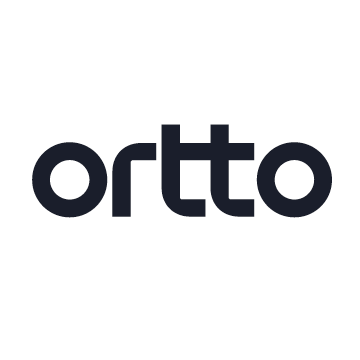 Ortto
and GraphQL integration
Ortto
and GraphQL integration Yodiz
and GraphQL integration
Yodiz
and GraphQL integration 7todos
and GraphQL integration
7todos
and GraphQL integration 3Scribe
and GraphQL integration
3Scribe
and GraphQL integration Accelo
and GraphQL integration
Accelo
and GraphQL integration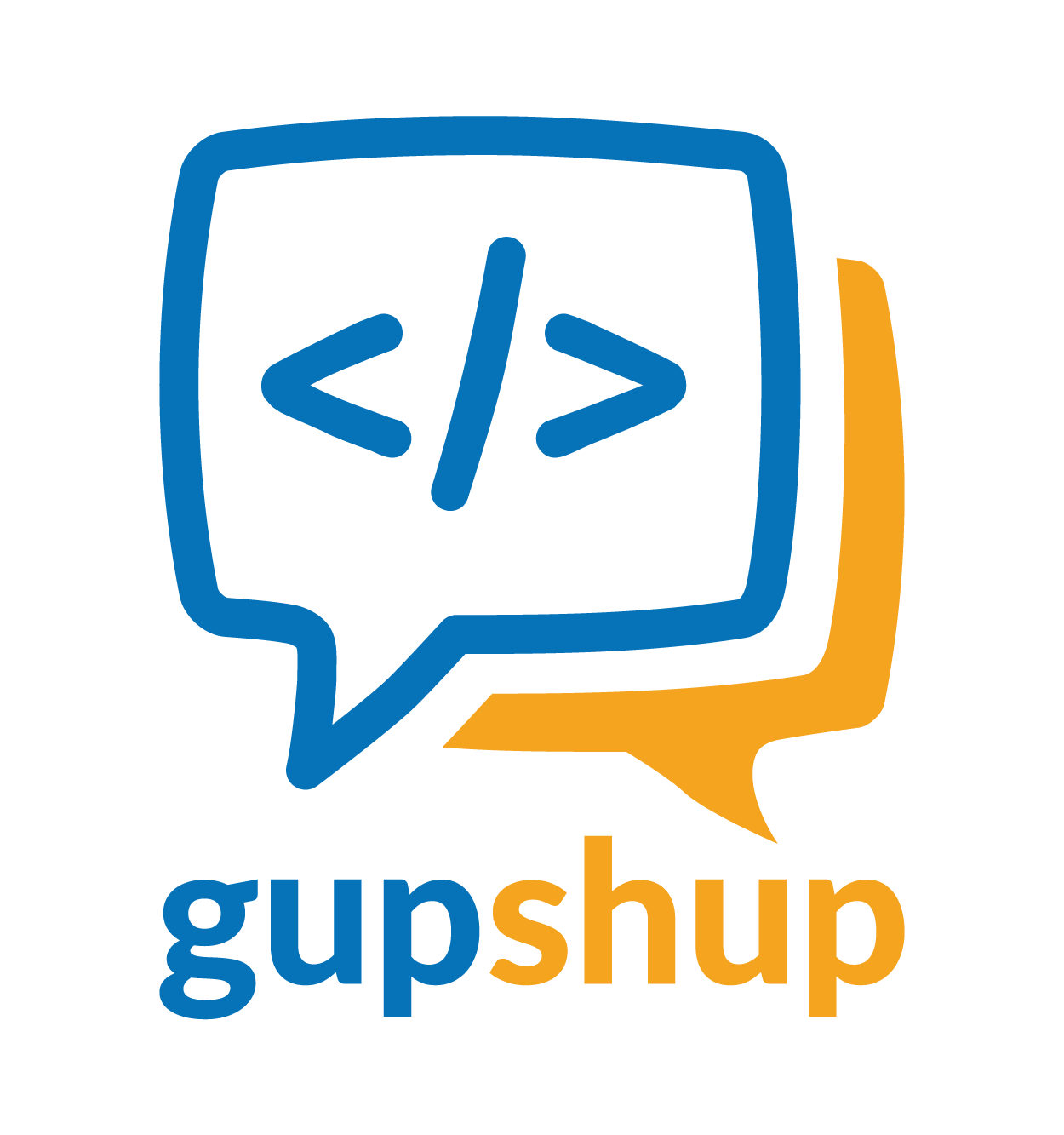 Gupshup
and GraphQL integration
Gupshup
and GraphQL integration RealPhoneValidation
and GraphQL integration
RealPhoneValidation
and GraphQL integration ISN
and GraphQL integration
ISN
and GraphQL integration Rewardful
and GraphQL integration
Rewardful
and GraphQL integration Accuranker
and GraphQL integration
Accuranker
and GraphQL integration Corsizio
and GraphQL integration
Corsizio
and GraphQL integration TextMagic
and GraphQL integration
TextMagic
and GraphQL integration Forms On Fire
and GraphQL integration
Forms On Fire
and GraphQL integration Mastodon
and GraphQL integration
Mastodon
and GraphQL integration Formcarry
and GraphQL integration
Formcarry
and GraphQL integration Patreon
and GraphQL integration
Patreon
and GraphQL integration Amazon
and GraphQL integration
Amazon
and GraphQL integration Envoy
and GraphQL integration
Envoy
and GraphQL integration Capsule
and GraphQL integration
Capsule
and GraphQL integration Formsite
and GraphQL integration
Formsite
and GraphQL integration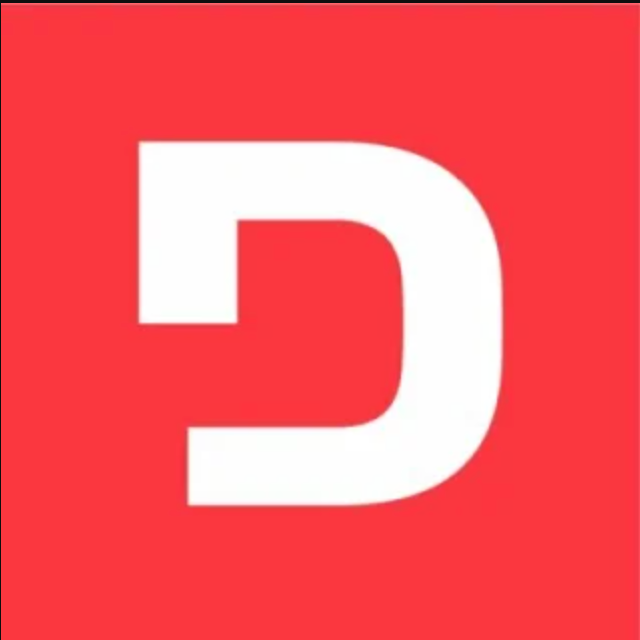 Deepgram
and GraphQL integration
Deepgram
and GraphQL integration SimpleTexting
and GraphQL integration
SimpleTexting
and GraphQL integration SimpleKPI
and GraphQL integration
SimpleKPI
and GraphQL integration LIME Go
and GraphQL integration
LIME Go
and GraphQL integration Plecto
and GraphQL integration
Plecto
and GraphQL integration TurboHire
and GraphQL integration
TurboHire
and GraphQL integration TalentLMS
and GraphQL integration
TalentLMS
and GraphQL integration Salesmsg
and GraphQL integration
Salesmsg
and GraphQL integration Kaggle
and GraphQL integration
Kaggle
and GraphQL integration Switchboard
and GraphQL integration
Switchboard
and GraphQL integration LiveAgent
and GraphQL integration
LiveAgent
and GraphQL integration KnowBe4
and GraphQL integration
KnowBe4
and GraphQL integration Mews
and GraphQL integration
Mews
and GraphQL integration Acquire
and GraphQL integration
Acquire
and GraphQL integration Textgain
and GraphQL integration
Textgain
and GraphQL integration PaperForm
and GraphQL integration
PaperForm
and GraphQL integration Zonka Feedback
and GraphQL integration
Zonka Feedback
and GraphQL integration Cloze
and GraphQL integration
Cloze
and GraphQL integration Platform.ly
and GraphQL integration
Platform.ly
and GraphQL integration College Football Data
and GraphQL integration
College Football Data
and GraphQL integration Qualaroo
and GraphQL integration
Qualaroo
and GraphQL integration FullContact
and GraphQL integration
FullContact
and GraphQL integration HUB Planner
and GraphQL integration
HUB Planner
and GraphQL integration Mailersend
and GraphQL integration
Mailersend
and GraphQL integration MoonClerk
and GraphQL integration
MoonClerk
and GraphQL integration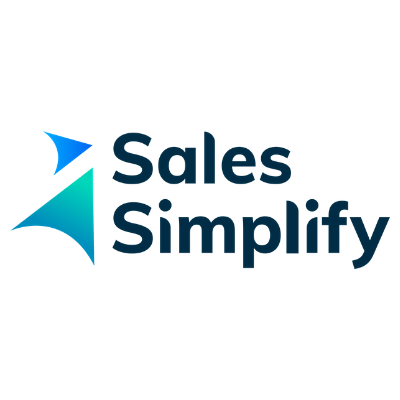 Sales Simplify
and GraphQL integration
Sales Simplify
and GraphQL integration Signaturit
and GraphQL integration
Signaturit
and GraphQL integration Omniconvert
and GraphQL integration
Omniconvert
and GraphQL integration Focuster
and GraphQL integration
Focuster
and GraphQL integration HeySummit
and GraphQL integration
HeySummit
and GraphQL integration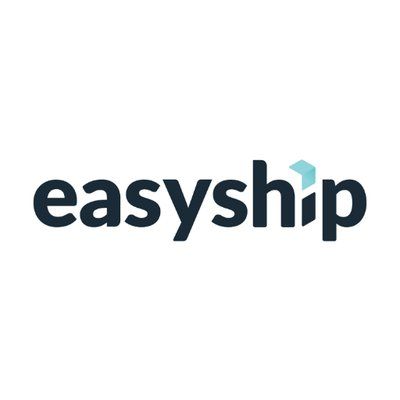 Easyship
and GraphQL integration
Easyship
and GraphQL integration Thrivecart
and GraphQL integration
Thrivecart
and GraphQL integration GetScreenshot
and GraphQL integration
GetScreenshot
and GraphQL integration Databox
and GraphQL integration
Databox
and GraphQL integration Breezy HR
and GraphQL integration
Breezy HR
and GraphQL integration Esendex
and GraphQL integration
Esendex
and GraphQL integration AirNow
and GraphQL integration
AirNow
and GraphQL integration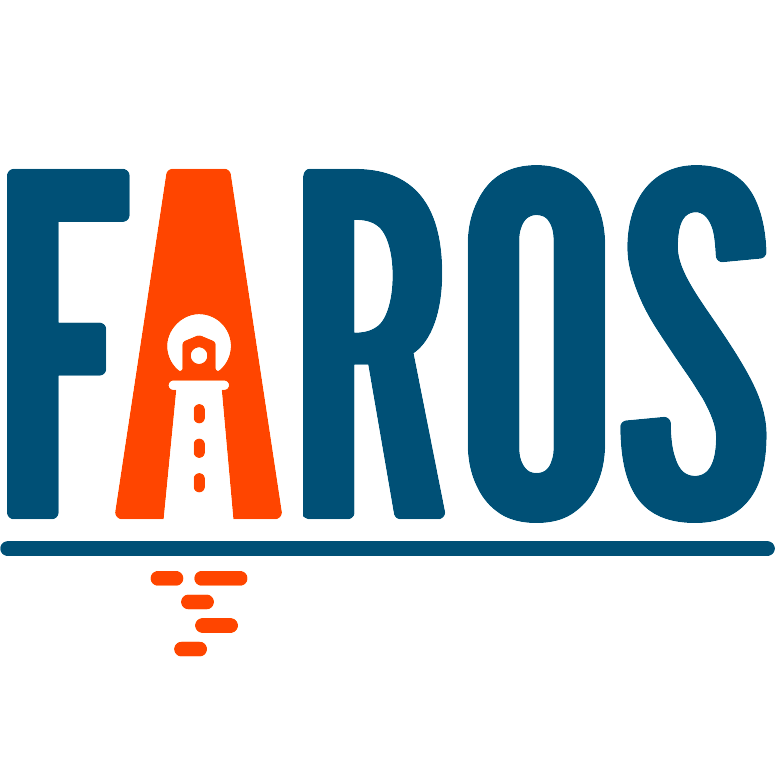 Faros
and GraphQL integration
Faros
and GraphQL integration Sierra Interactive
and GraphQL integration
Sierra Interactive
and GraphQL integration Lusha
and GraphQL integration
Lusha
and GraphQL integration Relink - URL Shortener
and GraphQL integration
Relink - URL Shortener
and GraphQL integration Oxylabs
and GraphQL integration
Oxylabs
and GraphQL integration Planview Leankit
and GraphQL integration
Planview Leankit
and GraphQL integration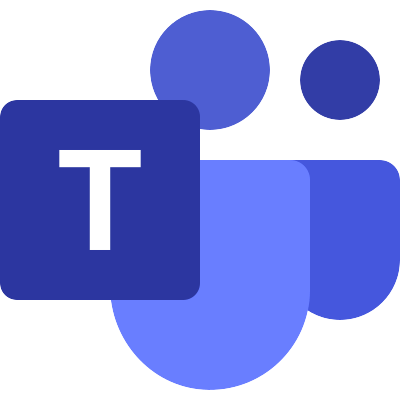 Microsoft Teams Admin
and GraphQL integration
Microsoft Teams Admin
and GraphQL integration Cisco Webex
and GraphQL integration
Cisco Webex
and GraphQL integration LeadBoxer
and GraphQL integration
LeadBoxer
and GraphQL integration Pivotal Tracker
and GraphQL integration
Pivotal Tracker
and GraphQL integration Chargify
and GraphQL integration
Chargify
and GraphQL integration SwagUp
and GraphQL integration
SwagUp
and GraphQL integration imgbb
and GraphQL integration
imgbb
and GraphQL integration SmartReach
and GraphQL integration
SmartReach
and GraphQL integration Freshping
and GraphQL integration
Freshping
and GraphQL integration MoonMail
and GraphQL integration
MoonMail
and GraphQL integration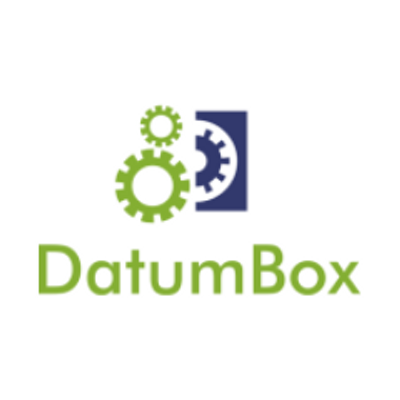 Datumbox
and GraphQL integration
Datumbox
and GraphQL integration SMS-IT
and GraphQL integration
SMS-IT
and GraphQL integration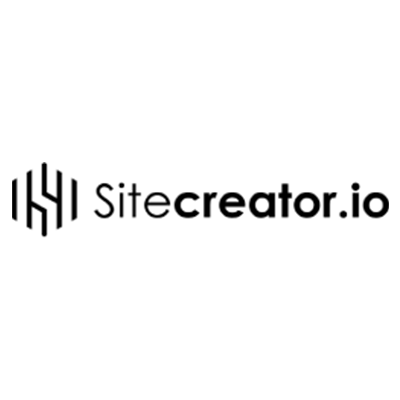 Sitecreator.io
and GraphQL integration
Sitecreator.io
and GraphQL integration DigiCert
and GraphQL integration
DigiCert
and GraphQL integration awork
and GraphQL integration
awork
and GraphQL integration CalendarHero
and GraphQL integration
CalendarHero
and GraphQL integration Marketing Master IO
and GraphQL integration
Marketing Master IO
and GraphQL integration WatchSignals
and GraphQL integration
WatchSignals
and GraphQL integration RD Station CRM
and GraphQL integration
RD Station CRM
and GraphQL integration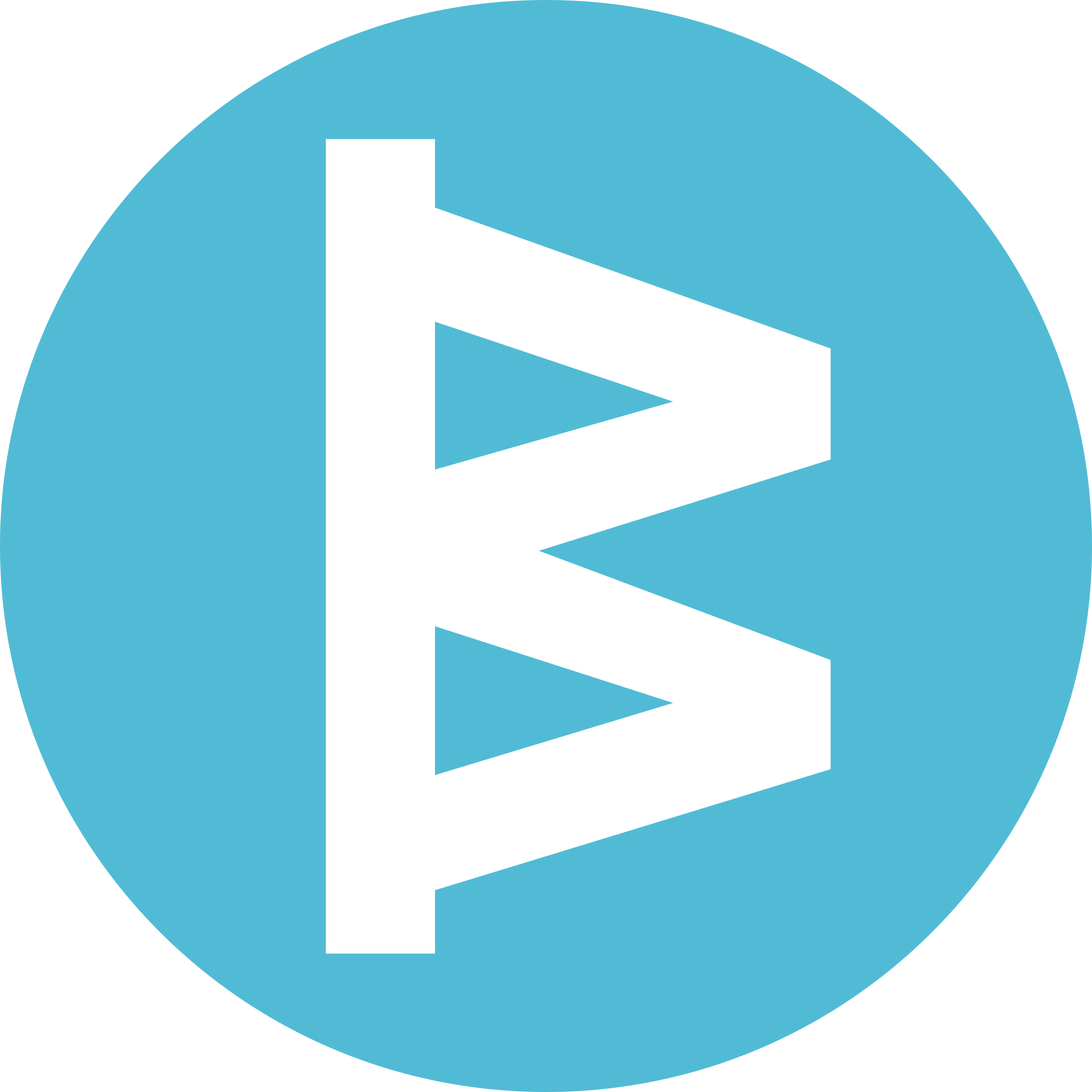 Workboard
and GraphQL integration
Workboard
and GraphQL integration Firmao
and GraphQL integration
Firmao
and GraphQL integration SnatchBot
and GraphQL integration
SnatchBot
and GraphQL integration Airbrake
and GraphQL integration
Airbrake
and GraphQL integration Fitbit
and GraphQL integration
Fitbit
and GraphQL integration Google AI Studio (Gemini)
and GraphQL integration
Google AI Studio (Gemini)
and GraphQL integration Grain
and GraphQL integration
Grain
and GraphQL integration Fathom
and GraphQL integration
Fathom
and GraphQL integration Personal AI
and GraphQL integration
Personal AI
and GraphQL integration Descript
and GraphQL integration
Descript
and GraphQL integration Synthesia
and GraphQL integration
Synthesia
and GraphQL integration AnnounceKit
and GraphQL integration
AnnounceKit
and GraphQL integration Read AI
and GraphQL integration
Read AI
and GraphQL integration TrackVia
and GraphQL integration
TrackVia
and GraphQL integration Supernormal
and GraphQL integration
Supernormal
and GraphQL integration Seamless AI
and GraphQL integration
Seamless AI
and GraphQL integration HeyGen
and GraphQL integration
HeyGen
and GraphQL integration TalkNotes
and GraphQL integration
TalkNotes
and GraphQL integration Relevance AI
and GraphQL integration
Relevance AI
and GraphQL integration Browserless
and GraphQL integration
Browserless
and GraphQL integration Stammer.ai
and GraphQL integration
Stammer.ai
and GraphQL integration Wonderchat
and GraphQL integration
Wonderchat
and GraphQL integration Airparser
and GraphQL integration
Airparser
and GraphQL integration Voicit
and GraphQL integration
Voicit
and GraphQL integration Kraftful
and GraphQL integration
Kraftful
and GraphQL integration Dante AI
and GraphQL integration
Dante AI
and GraphQL integration AccurAI
and GraphQL integration
AccurAI
and GraphQL integration CustomerIQ
and GraphQL integration
CustomerIQ
and GraphQL integration Enterpret
and GraphQL integration
Enterpret
and GraphQL integration Blaze
and GraphQL integration
Blaze
and GraphQL integration Vowel
and GraphQL integration
Vowel
and GraphQL integration Google Vertex AI
and GraphQL integration
Google Vertex AI
and GraphQL integration echowin
and GraphQL integration
echowin
and GraphQL integration Superpowered
and GraphQL integration
Superpowered
and GraphQL integration FastBots
and GraphQL integration
FastBots
and GraphQL integration Predis.ai
and GraphQL integration
Predis.ai
and GraphQL integration Botsonic
and GraphQL integration
Botsonic
and GraphQL integration My AskAI
and GraphQL integration
My AskAI
and GraphQL integration Sembly AI
and GraphQL integration
Sembly AI
and GraphQL integration Chatsonic
and GraphQL integration
Chatsonic
and GraphQL integration Jasper
and GraphQL integration
Jasper
and GraphQL integration Wondercraft
and GraphQL integration
Wondercraft
and GraphQL integration Botifier
and GraphQL integration
Botifier
and GraphQL integration Nyota
and GraphQL integration
Nyota
and GraphQL integration ParsePrompt
and GraphQL integration
ParsePrompt
and GraphQL integration Brain Pod AI
and GraphQL integration
Brain Pod AI
and GraphQL integration Gali
and GraphQL integration
Gali
and GraphQL integration Brandblast
and GraphQL integration
Brandblast
and GraphQL integration Cradl AI
and GraphQL integration
Cradl AI
and GraphQL integration Droxy
and GraphQL integration
Droxy
and GraphQL integration EmbedAI
and GraphQL integration
EmbedAI
and GraphQL integration DialZara
and GraphQL integration
DialZara
and GraphQL integration Nyckel
and GraphQL integration
Nyckel
and GraphQL integration Alphamoon
and GraphQL integration
Alphamoon
and GraphQL integration The Leap
and GraphQL integration
The Leap
and GraphQL integration OmniMind
and GraphQL integration
OmniMind
and GraphQL integration Convi
and GraphQL integration
Convi
and GraphQL integration ChatMasters
and GraphQL integration
ChatMasters
and GraphQL integration ThoughtfulGPT
and GraphQL integration
ThoughtfulGPT
and GraphQL integration Simpleem
and GraphQL integration
Simpleem
and GraphQL integration GPTea
and GraphQL integration
GPTea
and GraphQL integration Teknoir
and GraphQL integration
Teknoir
and GraphQL integration CraftDraft
and GraphQL integration
CraftDraft
and GraphQL integration Faraday
and GraphQL integration
Faraday
and GraphQL integration Xtractly
and GraphQL integration
Xtractly
and GraphQL integration DocuWriter
and GraphQL integration
DocuWriter
and GraphQL integration Autobound
and GraphQL integration
Autobound
and GraphQL integration RoboResponseAI
and GraphQL integration
RoboResponseAI
and GraphQL integration WizyChat
and GraphQL integration
WizyChat
and GraphQL integration Salesmaa
and GraphQL integration
Salesmaa
and GraphQL integration Diddo AI
and GraphQL integration
Diddo AI
and GraphQL integration Nuclia
and GraphQL integration
Nuclia
and GraphQL integration Knack
and GraphQL integration
Knack
and GraphQL integration bot9
and GraphQL integration
bot9
and GraphQL integration Sharly AI
and GraphQL integration
Sharly AI
and GraphQL integration Libraria
and GraphQL integration
Libraria
and GraphQL integration Empsing
and GraphQL integration
Empsing
and GraphQL integration Cloozo
and GraphQL integration
Cloozo
and GraphQL integration Google Tables
and GraphQL integration
Google Tables
and GraphQL integration Maverick
and GraphQL integration
Maverick
and GraphQL integration SimpleLocalize
and GraphQL integration
SimpleLocalize
and GraphQL integration InfoLobby
and GraphQL integration
InfoLobby
and GraphQL integration AITable.ai
and GraphQL integration
AITable.ai
and GraphQL integration Ninox
and GraphQL integration
Ninox
and GraphQL integration Marcom Robot
and GraphQL integration
Marcom Robot
and GraphQL integration Fusioo
and GraphQL integration
Fusioo
and GraphQL integration TiDB Cloud
and GraphQL integration
TiDB Cloud
and GraphQL integration Clarifai
and GraphQL integration
Clarifai
and GraphQL integration On2Air
and GraphQL integration
On2Air
and GraphQL integration Autom
and GraphQL integration
Autom
and GraphQL integration Trevor.io
and GraphQL integration
Trevor.io
and GraphQL integration LaunchDarkly
and GraphQL integration
LaunchDarkly
and GraphQL integration Grid
and GraphQL integration
Grid
and GraphQL integration Solve Data
and GraphQL integration
Solve Data
and GraphQL integration IP2Location
and GraphQL integration
IP2Location
and GraphQL integration ScreenshotOne
and GraphQL integration
ScreenshotOne
and GraphQL integration Pitchly
and GraphQL integration
Pitchly
and GraphQL integration ApptiveGrid
and GraphQL integration
ApptiveGrid
and GraphQL integration IndustrySelect
and GraphQL integration
IndustrySelect
and GraphQL integration Persio
and GraphQL integration
Persio
and GraphQL integration Omeda
and GraphQL integration
Omeda
and GraphQL integration Apify
and GraphQL integration
Apify
and GraphQL integration Passcreator
and GraphQL integration
Passcreator
and GraphQL integration Sales.Rocks
and GraphQL integration
Sales.Rocks
and GraphQL integration HasData
and GraphQL integration
HasData
and GraphQL integration Lighthouse
and GraphQL integration
Lighthouse
and GraphQL integration Ipregistry
and GraphQL integration
Ipregistry
and GraphQL integration Gleap
and GraphQL integration
Gleap
and GraphQL integration ZenRows
and GraphQL integration
ZenRows
and GraphQL integration Cloudinary
and GraphQL integration
Cloudinary
and GraphQL integration Keygen
and GraphQL integration
Keygen
and GraphQL integration Data Soap
and GraphQL integration
Data Soap
and GraphQL integration TestMonitor
and GraphQL integration
TestMonitor
and GraphQL integration BugHerd
and GraphQL integration
BugHerd
and GraphQL integration Localazy
and GraphQL integration
Localazy
and GraphQL integration BigML
and GraphQL integration
BigML
and GraphQL integration Bugpilot
and GraphQL integration
Bugpilot
and GraphQL integration Transifex
and GraphQL integration
Transifex
and GraphQL integration Rootly
and GraphQL integration
Rootly
and GraphQL integration Ybug
and GraphQL integration
Ybug
and GraphQL integration Cryptolens
and GraphQL integration
Cryptolens
and GraphQL integration Venly
and GraphQL integration
Venly
and GraphQL integration Lokalise
and GraphQL integration
Lokalise
and GraphQL integration BugBug
and GraphQL integration
BugBug
and GraphQL integration KEYZY
and GraphQL integration
KEYZY
and GraphQL integration BrowserStack
and GraphQL integration
BrowserStack
and GraphQL integration Kadoa
and GraphQL integration
Kadoa
and GraphQL integration Ideta
and GraphQL integration
Ideta
and GraphQL integration Alerty
and GraphQL integration
Alerty
and GraphQL integration Bugfender
and GraphQL integration
Bugfender
and GraphQL integration Impira
and GraphQL integration
Impira
and GraphQL integration Tuulio
and GraphQL integration
Tuulio
and GraphQL integration One AI
and GraphQL integration
One AI
and GraphQL integration Relysia
and GraphQL integration
Relysia
and GraphQL integration YepCode
and GraphQL integration
YepCode
and GraphQL integration Robolytix
and GraphQL integration
Robolytix
and GraphQL integration Flotiq
and GraphQL integration
Flotiq
and GraphQL integration NMKR
and GraphQL integration
NMKR
and GraphQL integration Pulsetic
and GraphQL integration
Pulsetic
and GraphQL integration Spike
and GraphQL integration
Spike
and GraphQL integration LambdaTest
and GraphQL integration
LambdaTest
and GraphQL integration Chekhub
and GraphQL integration
Chekhub
and GraphQL integration Evolphin Zoom
and GraphQL integration
Evolphin Zoom
and GraphQL integration Dasha
and GraphQL integration
Dasha
and GraphQL integration Starton
and GraphQL integration
Starton
and GraphQL integration ConfigCat
and GraphQL integration
ConfigCat
and GraphQL integration Phrase
and GraphQL integration
Phrase
and GraphQL integration LoginRadius
and GraphQL integration
LoginRadius
and GraphQL integration Diffy
and GraphQL integration
Diffy
and GraphQL integration Toket
and GraphQL integration
Toket
and GraphQL integration Flagship
and GraphQL integration
Flagship
and GraphQL integration Eartho
and GraphQL integration
Eartho
and GraphQL integration Lucidchart
and GraphQL integration
Lucidchart
and GraphQL integration CloudBoost
and GraphQL integration
CloudBoost
and GraphQL integration Cloud 66
and GraphQL integration
Cloud 66
and GraphQL integration Rollbar
and GraphQL integration
Rollbar
and GraphQL integration UptimeToolbox
and GraphQL integration
UptimeToolbox
and GraphQL integration ParseHub
and GraphQL integration
ParseHub
and GraphQL integration Tierion
and GraphQL integration
Tierion
and GraphQL integration BLOOCK
and GraphQL integration
BLOOCK
and GraphQL integration CloudShare
and GraphQL integration
CloudShare
and GraphQL integration Cronly
and GraphQL integration
Cronly
and GraphQL integration DevCycle
and GraphQL integration
DevCycle
and GraphQL integration Engati
and GraphQL integration
Engati
and GraphQL integration Instabug
and GraphQL integration
Instabug
and GraphQL integration OffAlerts
and GraphQL integration
OffAlerts
and GraphQL integration BugShot
and GraphQL integration
BugShot
and GraphQL integration ncScale
and GraphQL integration
ncScale
and GraphQL integration Evervault
and GraphQL integration
Evervault
and GraphQL integration TextKit
and GraphQL integration
TextKit
and GraphQL integration BugReplay
and GraphQL integration
BugReplay
and GraphQL integration AltText.ai
and GraphQL integration
AltText.ai
and GraphQL integration Eden AI
and GraphQL integration
Eden AI
and GraphQL integration PromptHub
and GraphQL integration
PromptHub
and GraphQL integration Claude
and GraphQL integration
Claude
and GraphQL integration Adobe
and GraphQL integration
Adobe
and GraphQL integration IntakeQ
and GraphQL integration
IntakeQ
and GraphQL integration Codefresh
and GraphQL integration
Codefresh
and GraphQL integration Apiary
and GraphQL integration
Apiary
and GraphQL integration Jama
and GraphQL integration
Jama
and GraphQL integration Growbots
and GraphQL integration
Growbots
and GraphQL integration Buildkite
and GraphQL integration
Buildkite
and GraphQL integration Pusher
and GraphQL integration
Pusher
and GraphQL integration Botium Box
and GraphQL integration
Botium Box
and GraphQL integration Domo
and GraphQL integration
Domo
and GraphQL integration Code Climate
and GraphQL integration
Code Climate
and GraphQL integration TextCortex AI
and GraphQL integration
TextCortex AI
and GraphQL integration The Customer Factor
and GraphQL integration
The Customer Factor
and GraphQL integration Timetonic
and GraphQL integration
Timetonic
and GraphQL integration elmah.io
and GraphQL integration
elmah.io
and GraphQL integration PractiTest
and GraphQL integration
PractiTest
and GraphQL integration Prospe AI
and GraphQL integration
Prospe AI
and GraphQL integration Clappia
and GraphQL integration
Clappia
and GraphQL integration Qualys
and GraphQL integration
Qualys
and GraphQL integration Leadpops
and GraphQL integration
Leadpops
and GraphQL integration Nanonets OCR
and GraphQL integration
Nanonets OCR
and GraphQL integration Invoiced
and GraphQL integration
Invoiced
and GraphQL integration OPN (formerly Omise)
and GraphQL integration
OPN (formerly Omise)
and GraphQL integration DocsBot AI
and GraphQL integration
DocsBot AI
and GraphQL integration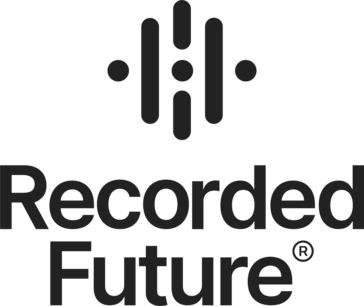 Recorded Future
and GraphQL integration
Recorded Future
and GraphQL integration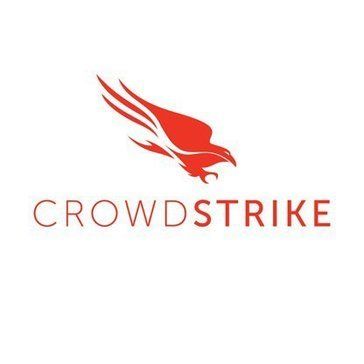 CrowdStrike
and GraphQL integration
CrowdStrike
and GraphQL integration Shuffler
and GraphQL integration
Shuffler
and GraphQL integration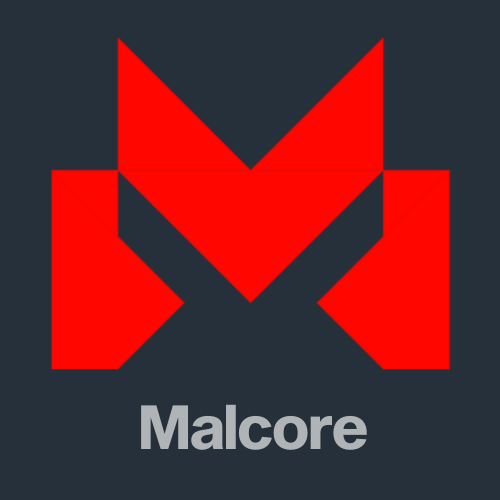 Malcore
and GraphQL integration
Malcore
and GraphQL integration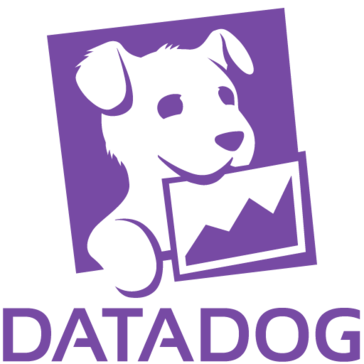 Datadog
and GraphQL integration
Datadog
and GraphQL integration Filescan
and GraphQL integration
Filescan
and GraphQL integration Iris Dfir
and GraphQL integration
Iris Dfir
and GraphQL integration Redash
and GraphQL integration
Redash
and GraphQL integration Search And Save
and GraphQL integration
Search And Save
and GraphQL integration Syncly
and GraphQL integration
Syncly
and GraphQL integration Whal3s
and GraphQL integration
Whal3s
and GraphQL integration Zoho WorkDrive
and GraphQL integration
Zoho WorkDrive
and GraphQL integration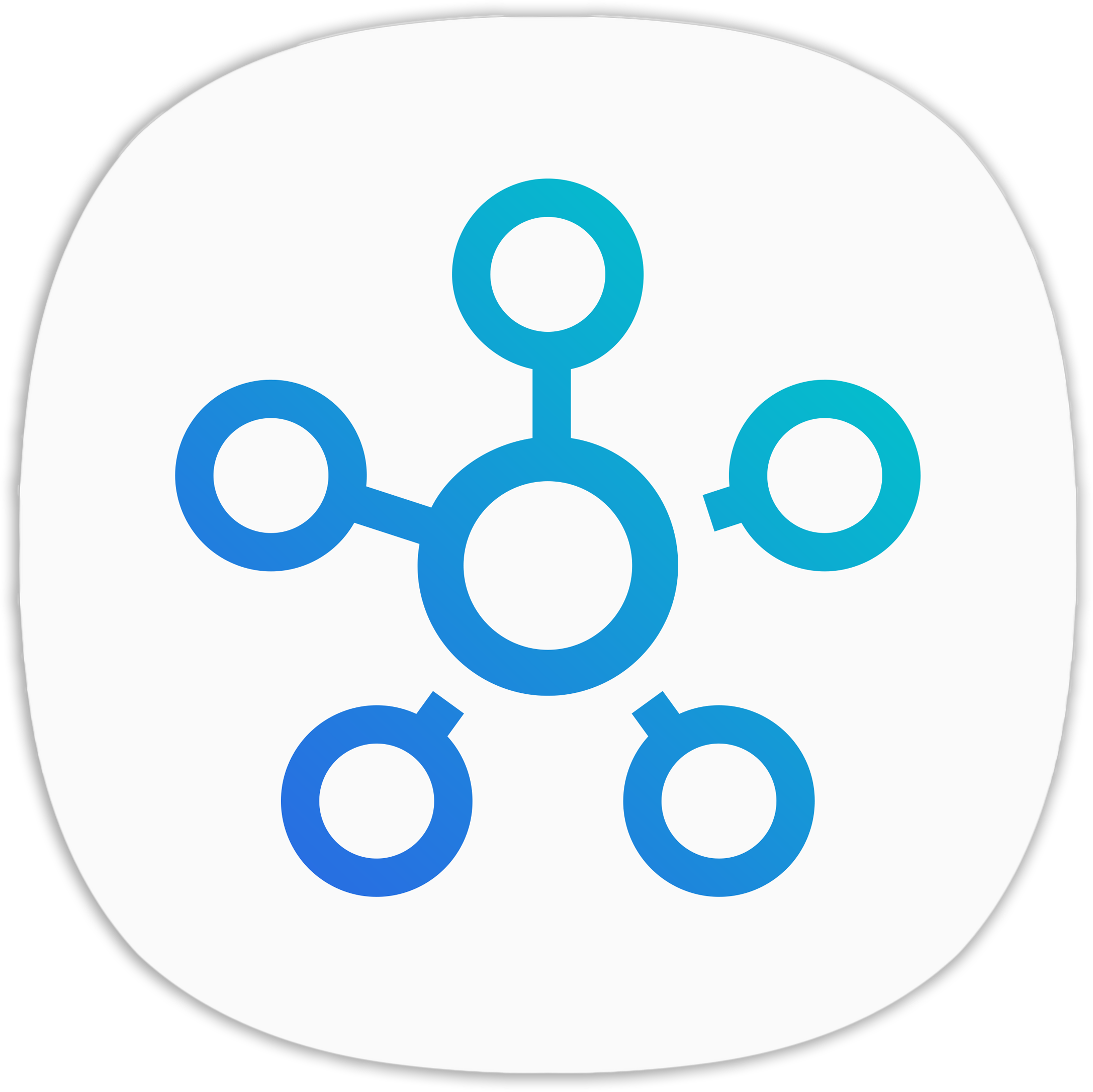 Samsung SmartThings
and GraphQL integration
Samsung SmartThings
and GraphQL integration Cisco Meraki
and GraphQL integration
Cisco Meraki
and GraphQL integration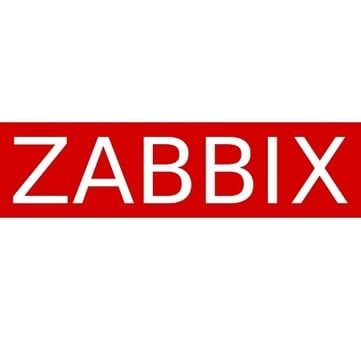 Zabbix
and GraphQL integration
Zabbix
and GraphQL integration Roboflow
and GraphQL integration
Roboflow
and GraphQL integration AlienVault
and GraphQL integration
AlienVault
and GraphQL integration Microsoft Entra ID (Azure Active Directory)
and GraphQL integration
Microsoft Entra ID (Azure Active Directory)
and GraphQL integration VirusTotal
and GraphQL integration
VirusTotal
and GraphQL integration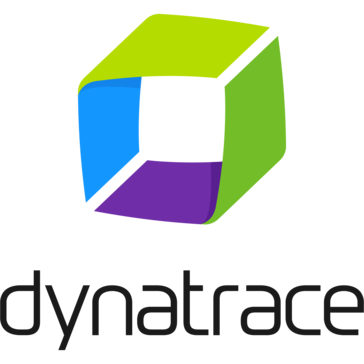 Dynatrace
and GraphQL integration
Dynatrace
and GraphQL integration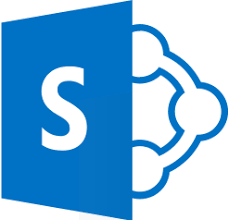 Sharepoint
and GraphQL integration
Sharepoint
and GraphQL integration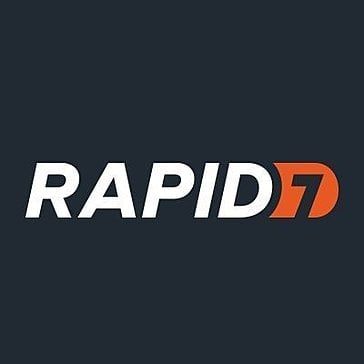 Rapid7 InsightVM
and GraphQL integration
Rapid7 InsightVM
and GraphQL integration Abstract
and GraphQL integration
Abstract
and GraphQL integration AbuselPDB
and GraphQL integration
AbuselPDB
and GraphQL integration AssemblyAI
and GraphQL integration
AssemblyAI
and GraphQL integration Better Proposals
and GraphQL integration
Better Proposals
and GraphQL integration Big Cartel
and GraphQL integration
Big Cartel
and GraphQL integration BrandMentions
and GraphQL integration
BrandMentions
and GraphQL integration CleverReach
and GraphQL integration
CleverReach
and GraphQL integration Crossmint
and GraphQL integration
Crossmint
and GraphQL integration CrowdPower
and GraphQL integration
CrowdPower
and GraphQL integration Outscraper
and GraphQL integration
Outscraper
and GraphQL integration Browse AI
and GraphQL integration
Browse AI
and GraphQL integration Calendly
and GraphQL integration
Calendly
and GraphQL integration Chaindesk
and GraphQL integration
Chaindesk
and GraphQL integration Chatbase
and GraphQL integration
Chatbase
and GraphQL integration Waveline Extract
and GraphQL integration
Waveline Extract
and GraphQL integration Chatling
and GraphQL integration
Chatling
and GraphQL integration Confluent
and GraphQL integration
Confluent
and GraphQL integration Databricks
and GraphQL integration
Databricks
and GraphQL integration Draftable
and GraphQL integration
Draftable
and GraphQL integration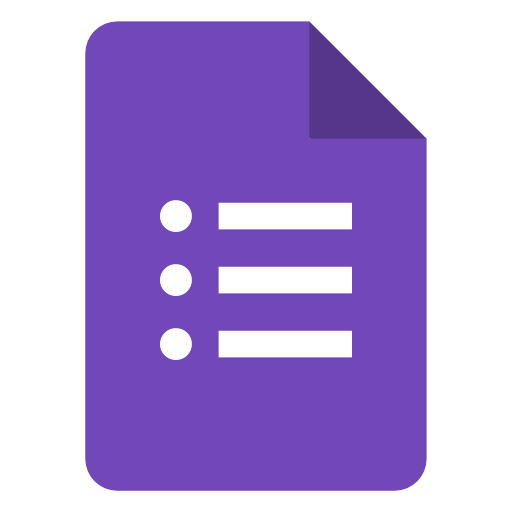 Google Forms
and GraphQL integration
Google Forms
and GraphQL integration Cody
and GraphQL integration
Cody
and GraphQL integration Copy.ai
and GraphQL integration
Copy.ai
and GraphQL integration OCRSpace
and GraphQL integration
OCRSpace
and GraphQL integration Order Desk
and GraphQL integration
Order Desk
and GraphQL integration Enormail
and GraphQL integration
Enormail
and GraphQL integration Helcim
and GraphQL integration
Helcim
and GraphQL integration IPInfo
and GraphQL integration
IPInfo
and GraphQL integration SignRequest
and GraphQL integration
SignRequest
and GraphQL integration Greip
and GraphQL integration
Greip
and GraphQL integration Hansei
and GraphQL integration
Hansei
and GraphQL integration Microsoft Dynamics 365 Business Central API
and GraphQL integration
Microsoft Dynamics 365 Business Central API
and GraphQL integration Morph
and GraphQL integration
Morph
and GraphQL integration Passslot
and GraphQL integration
Passslot
and GraphQL integration Paymo
and GraphQL integration
Paymo
and GraphQL integration Pinata
and GraphQL integration
Pinata
and GraphQL integration Pinboard
and GraphQL integration
Pinboard
and GraphQL integration Pirate Weather
and GraphQL integration
Pirate Weather
and GraphQL integration Prodia
and GraphQL integration
Prodia
and GraphQL integration QuintaDB
and GraphQL integration
QuintaDB
and GraphQL integration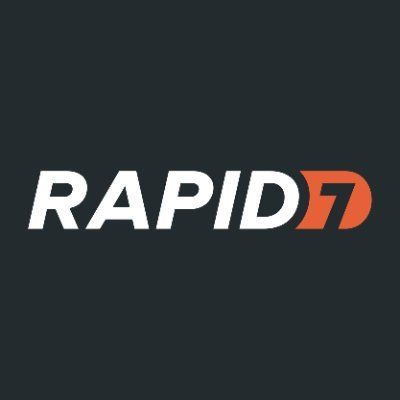 Rapid7 Insight Platform
and GraphQL integration
Rapid7 Insight Platform
and GraphQL integration Raven Tools
and GraphQL integration
Raven Tools
and GraphQL integration Route4Me
and GraphQL integration
Route4Me
and GraphQL integration Retable
and GraphQL integration
Retable
and GraphQL integration Specter
and GraphQL integration
Specter
and GraphQL integration Spydra
and GraphQL integration
Spydra
and GraphQL integration Team Up
and GraphQL integration
Team Up
and GraphQL integration Tuskr
and GraphQL integration
Tuskr
and GraphQL integration SiteSpeakAI
and GraphQL integration
SiteSpeakAI
and GraphQL integration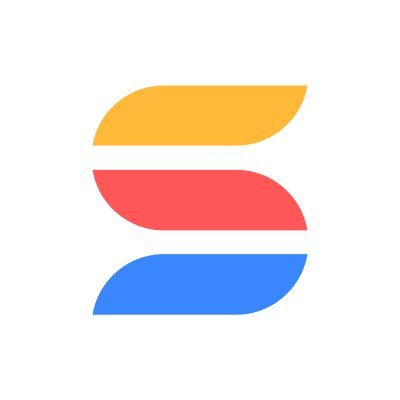 SmartSuite
and GraphQL integration
SmartSuite
and GraphQL integration Statuscake
and GraphQL integration
Statuscake
and GraphQL integration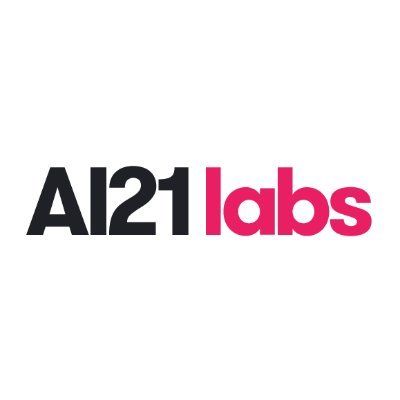 Studio by AI21 Labs
and GraphQL integration
Studio by AI21 Labs
and GraphQL integration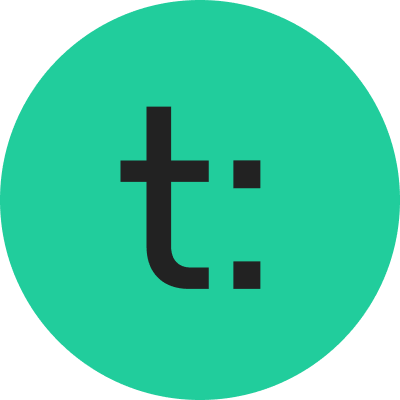 Teachable
and GraphQL integration
Teachable
and GraphQL integration Token Metrics
and GraphQL integration
Token Metrics
and GraphQL integration UserVoice
and GraphQL integration
UserVoice
and GraphQL integration Vimeo
and GraphQL integration
Vimeo
and GraphQL integration WhatConverts
and GraphQL integration
WhatConverts
and GraphQL integration Woodpecker.co
and GraphQL integration
Woodpecker.co
and GraphQL integration Ycode
and GraphQL integration
Ycode
and GraphQL integrationGraphQL Node Docs + Examples

Connect GraphQL with your company’s tech stack and create automation workflows
How can I set up GraphQL integration in n8n?
To use GraphQL integration in n8n, start by adding the GraphQL node to your workflow. You'll need to authenticate your GraphQL account using supported authentication methods. Once connected, you can choose from the list of supported actions or make custom API calls via the HTTP Request node, for example: you can create queries or mutations tailored to your needs. Ensure you define your endpoint correctly and structure your queries according to the GraphQL schema. Finally, test your setup to confirm that requests are functioning as expected.
Do I need any special permissions or API keys to integrate GraphQL with n8n?
Can I combine GraphQL with other apps in n8n workflows?
What are some common use cases for GraphQL integrations with n8n?
How does n8n’s pricing model benefit me when integrating GraphQL?
qupaya technologies
@qupaya
We're using the @n8n_io cloud for our internal automation tasks since the beta started. It's awesome! Also, support is super fast and always helpful. 🤗
aaron
@acar321
in other news I installed @n8n_io tonight and holy moly it’s good
it’s compatible with EVERYTHING
Cris
Last week I automated much of the back office work for a small design studio in less than 8hrs and I am still mind-blown about it.
n8n is a game-changer and should be known by all SMBs and even enterprise companies.
